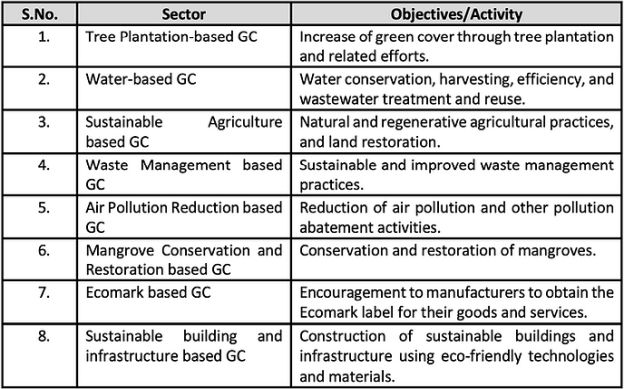- within Environment topic(s)
- with Finance and Tax Executives
- in United States
- with readers working within the Automotive, Telecomms and Utilities industries
To combat climate change, achieve net zero on or before 2070 and make individuals and entities part of a mass movement to create a positive impact on the environment, the Ministry of Environment, Forest and Climate Change on June 26, 2023, has notified the draft Green Credit Programme Implementation Rules, 2023 ("Draft Rules"), which proposes the launch of a Green Credit ("GC") programme on a national level to leverage a competitive market-based approach for GC and to incentivise voluntary environmental actions by stakeholders. This is in pursuance to the mention of this programme in the Union Budget 2023-24 as well as the "LiFE- Lifestyle for Environment" movement initiated by the Government of India which seeks to combat climate change and incentivise environment-friendly activities, which may broadly be defined as activities having co-benefits, such as reduction or removal of carbon emissions.
GC Programme aims to create a market-based mechanism for specific entities to earn incentives in the form of GC.
Here is a short summary of what the Draft Rules propose:
1. What is GC and who are the stakeholders? GC has been defined as a singular unit of an incentive provided for one or more specified activities, which deliver a positive impact on the environment. These GCs will act as a tradable incentive for a range of sectors and entities namely, individuals, Farmer Producer Organisations, cooperatives, forestry enterprises, sustainable agriculture enterprises, urban and rural local bodies, private sectors, industries, and organizations. GCs will be tradable outcomes and will act as incentives for environmentally friendly activities. These GCs will be made available for trading on a domestic market platform. An activity generating GCs under the GC Programme may also get Carbon Credits from the same activity under the carbon market.
2. What are the proposed activities? GC Programme is initially proposed to be a phase-wise programme for the identified sectors and objectives tabulated below. Initially, two to three activities from each sector will be considered for designing and piloting the GC programme. Thresholds and benchmarks for each GC activity for the generation and issuance of GC will be developed.

3. Administration andResponsibility Matrix: The Draft Rules propose the creation of the following:
- Anyone, an individual or entity, who wants to generate GC will have to get registered and will be referred to as a 'Registered Entity'.
- Steering Committee, for the governance of the GC Programme;
- Green Credit Programme Administrator, for which the Indian Council of Forestry Research and Education has been entrusted as the Administrator for the implementation, management, monitoring and operation of the GC Programme. It shall create and maintain an electronic database system to record the issuance and exchange of GCs;
- Accredited Green Credit Verifier(s), which entity(ies) will be accredited and authorized by the Green Credit Programme Administrator, to carry out verification and submit a report for grant of GC;
- Technical and Sectoral Committee, for development of methodologies, standards and processes for grant and registration of GC;
- Green Credit Registry, for maintenance of records related to GC, including issuance, holding, transfer, etc.;
- Trading Platform, for exchange of GCs,
- Knowledge and Data Platform, for providing transparency and sectoral progress report on activities being undertaken.
- Empanelled Auditors, to be empanelled by the Central Government for auditing the entire system of the Programme.
What this means?
The Draft Rules have sought objections and suggestions from the public and will be taken into consideration, on or before August 24, 2023.
GC Programme is a good intent legislation aimed towards the goal of sustainable development and clean energy, however, monitoring, evaluation and implementation are key here, especially due to the wider ambit of activities included in the GC Programme (compared to the carbon credit market, which concerns only with trading of greenhouse gas emissions). Further, the Draft Rules also should address the questions concerning the relationship or conversion of GC and Carbon Credit, contribution to Nationally Determined Contribution, and export of GC, amongst others.
The content of this article is intended to provide a general guide to the subject matter. Specialist advice should be sought about your specific circumstances.



